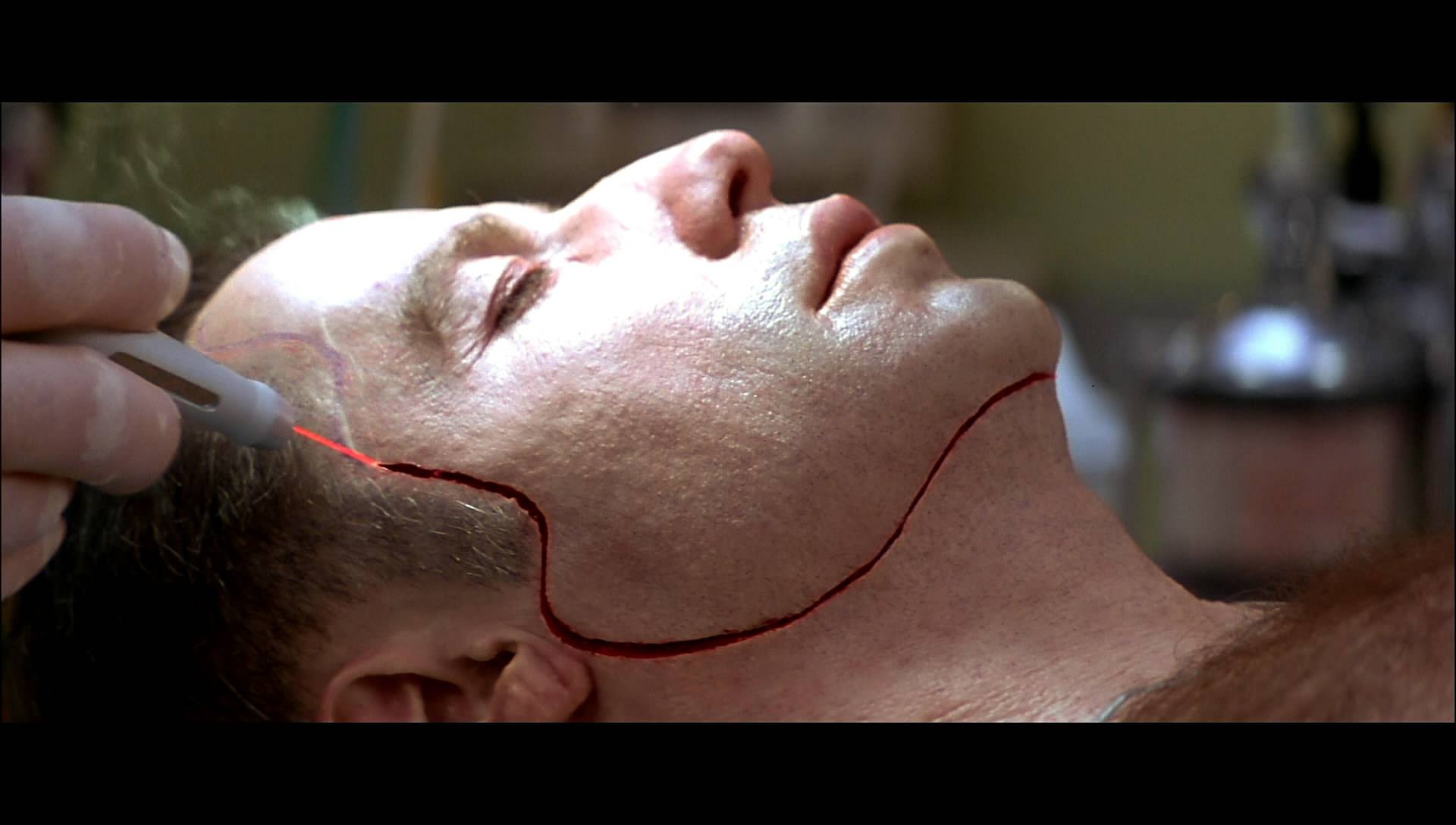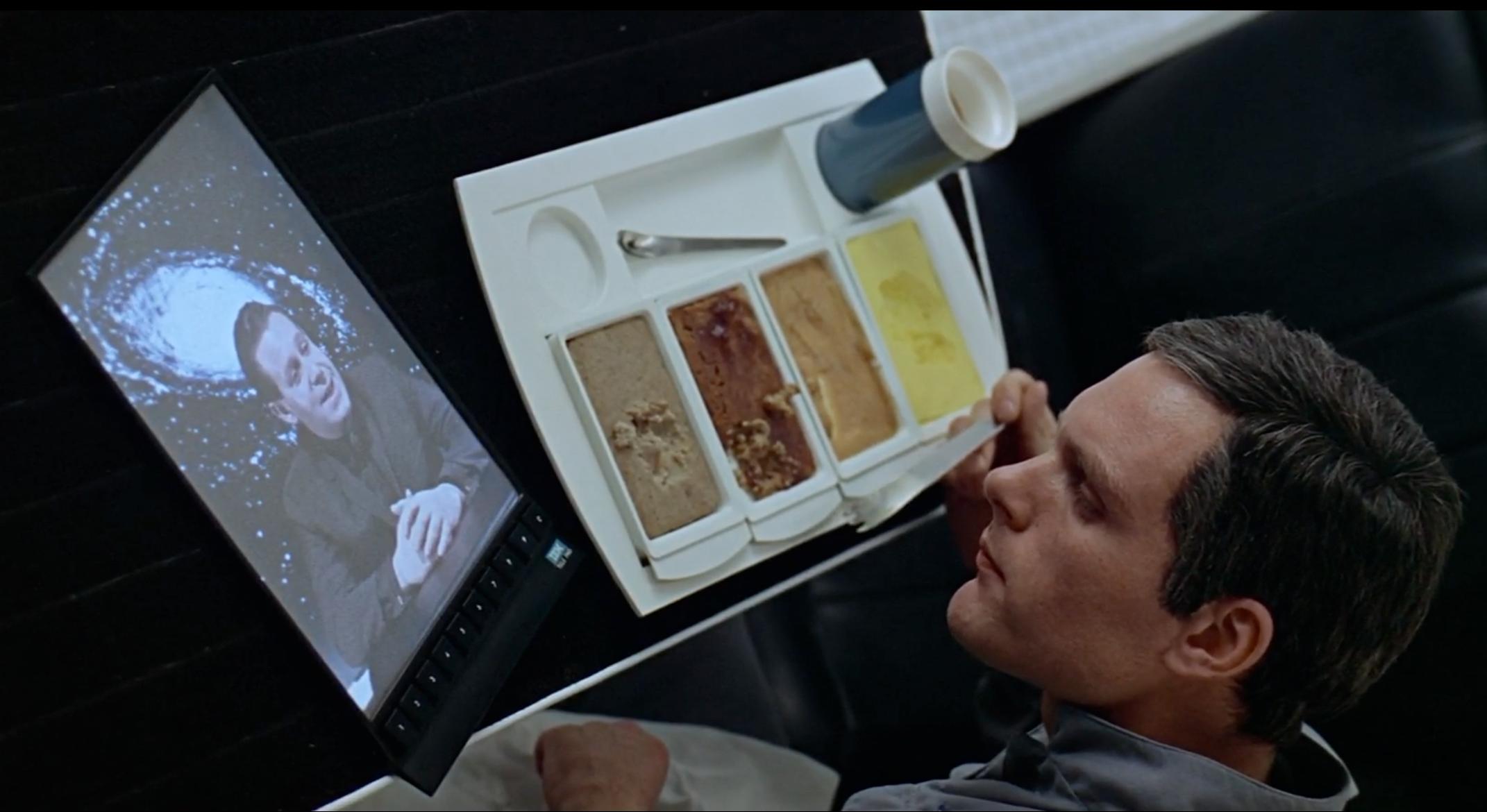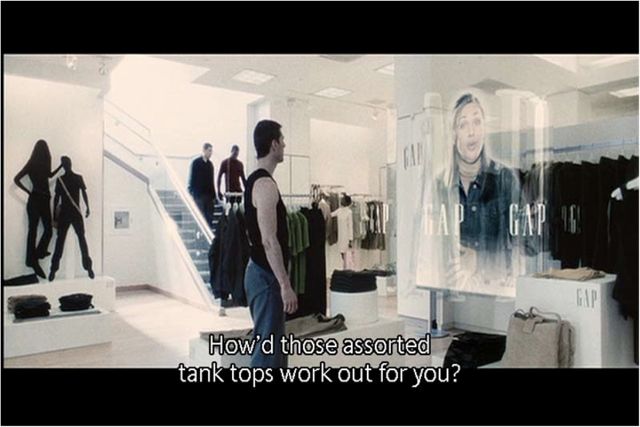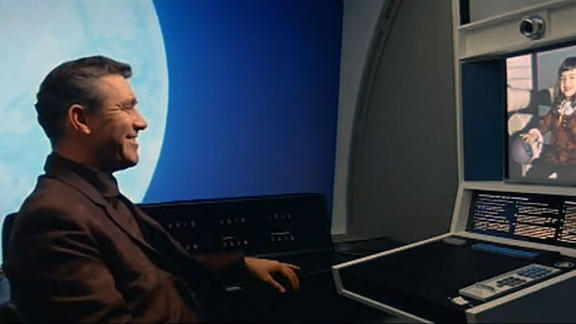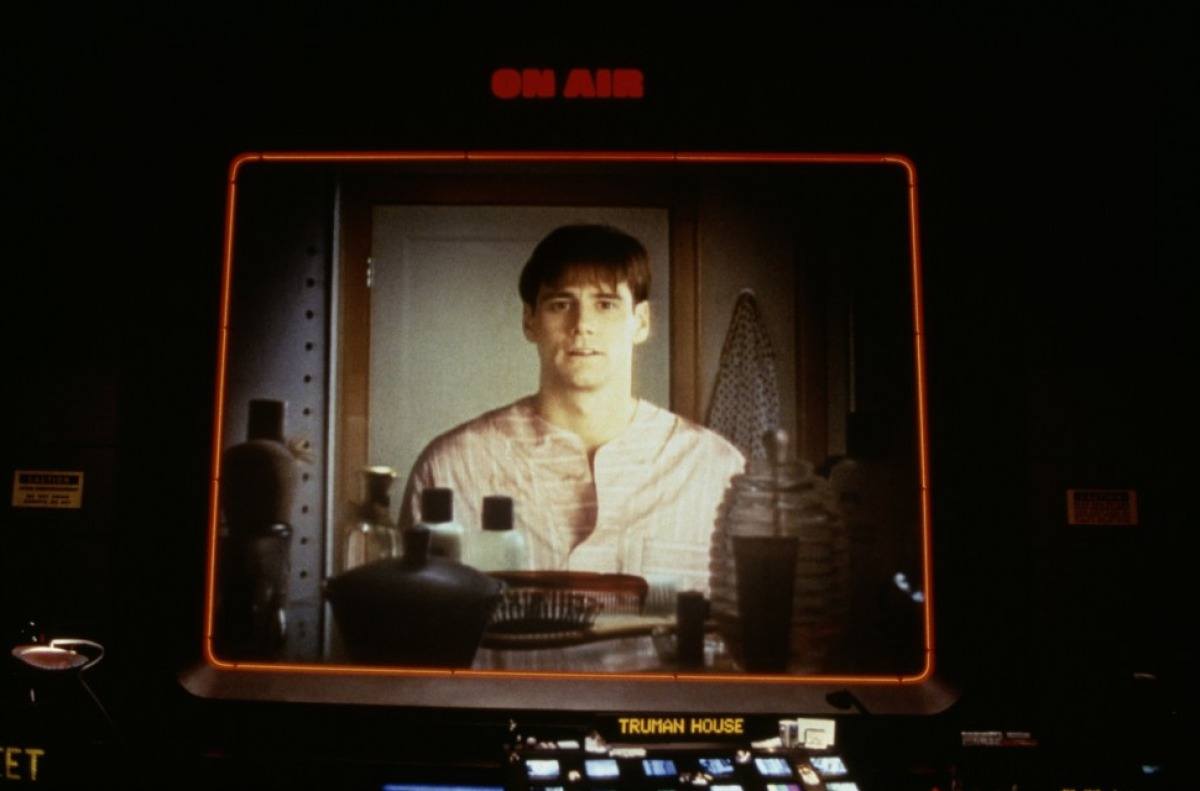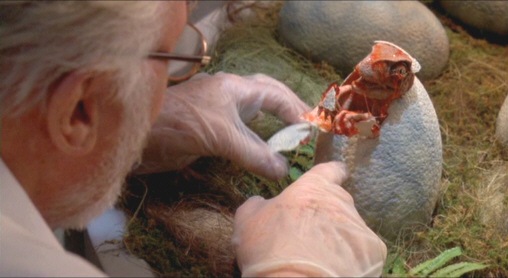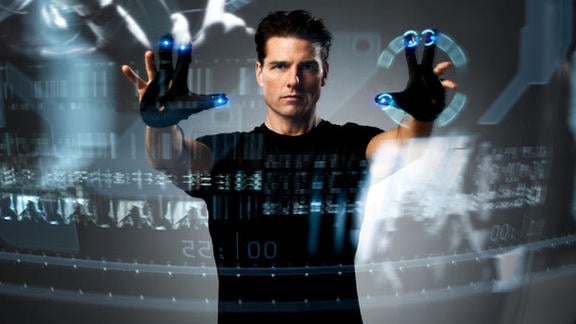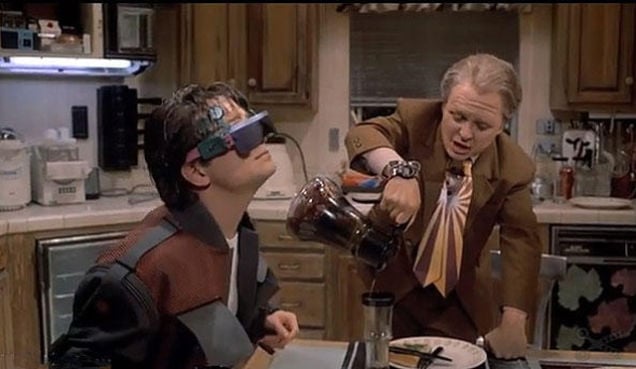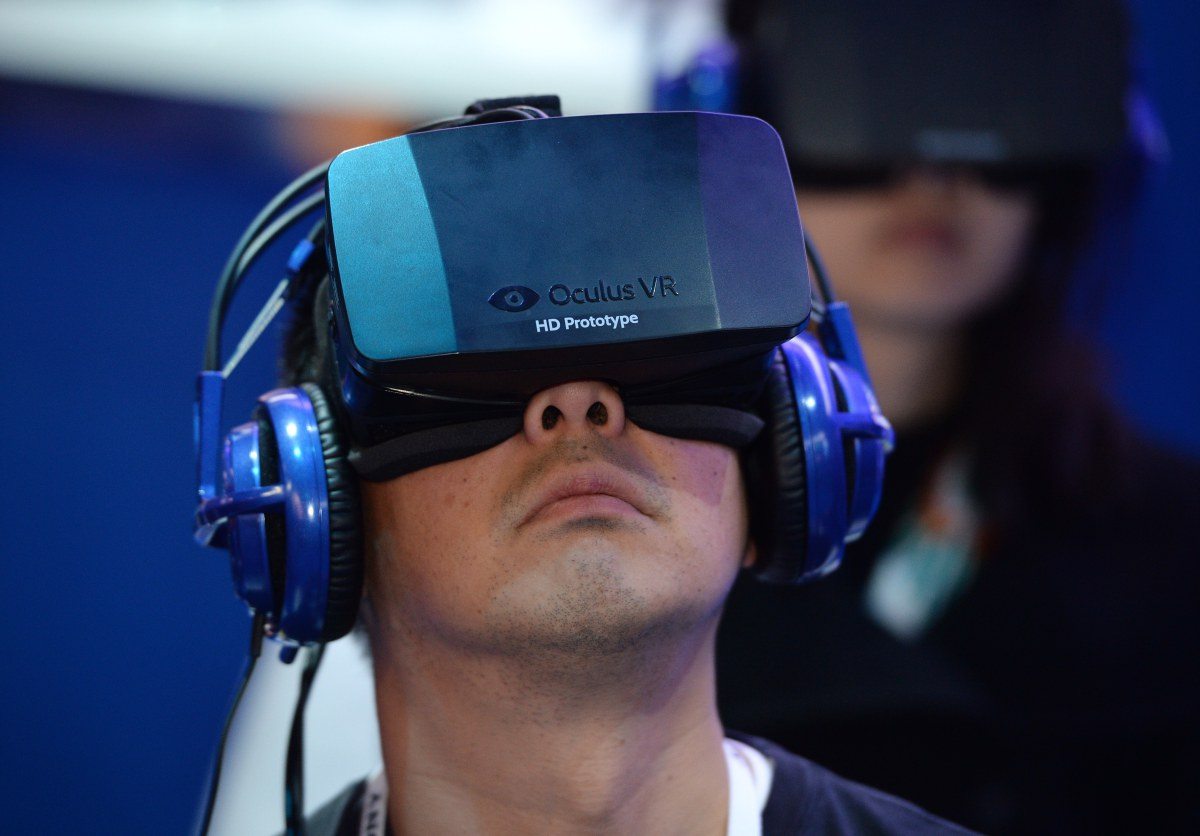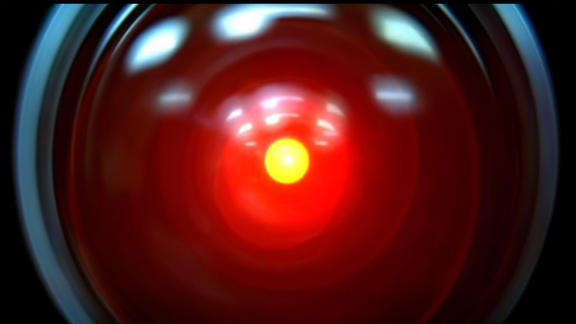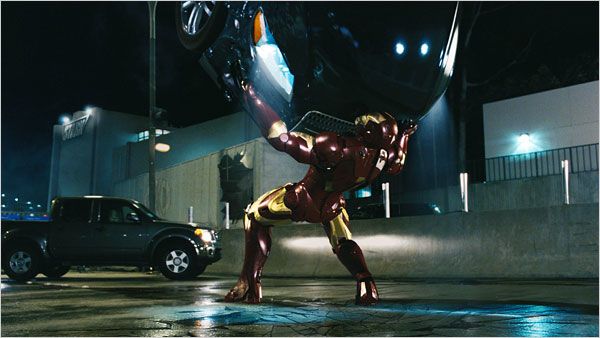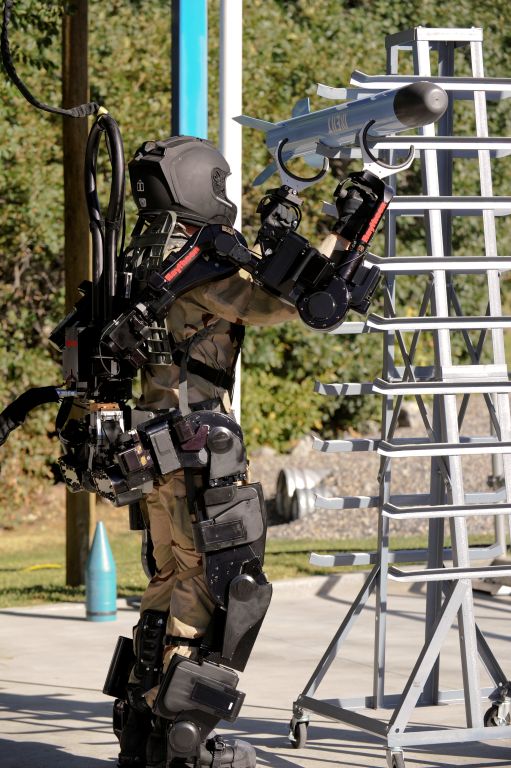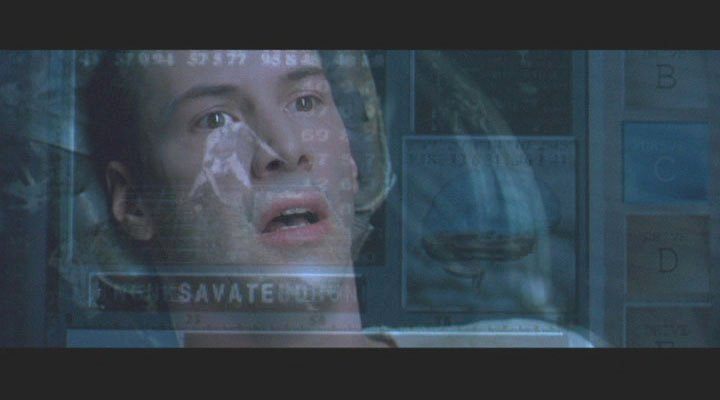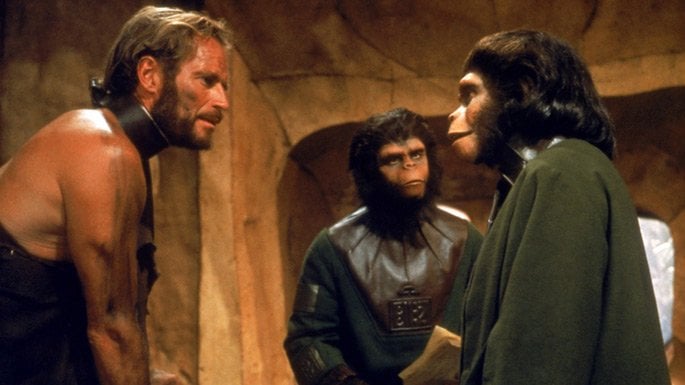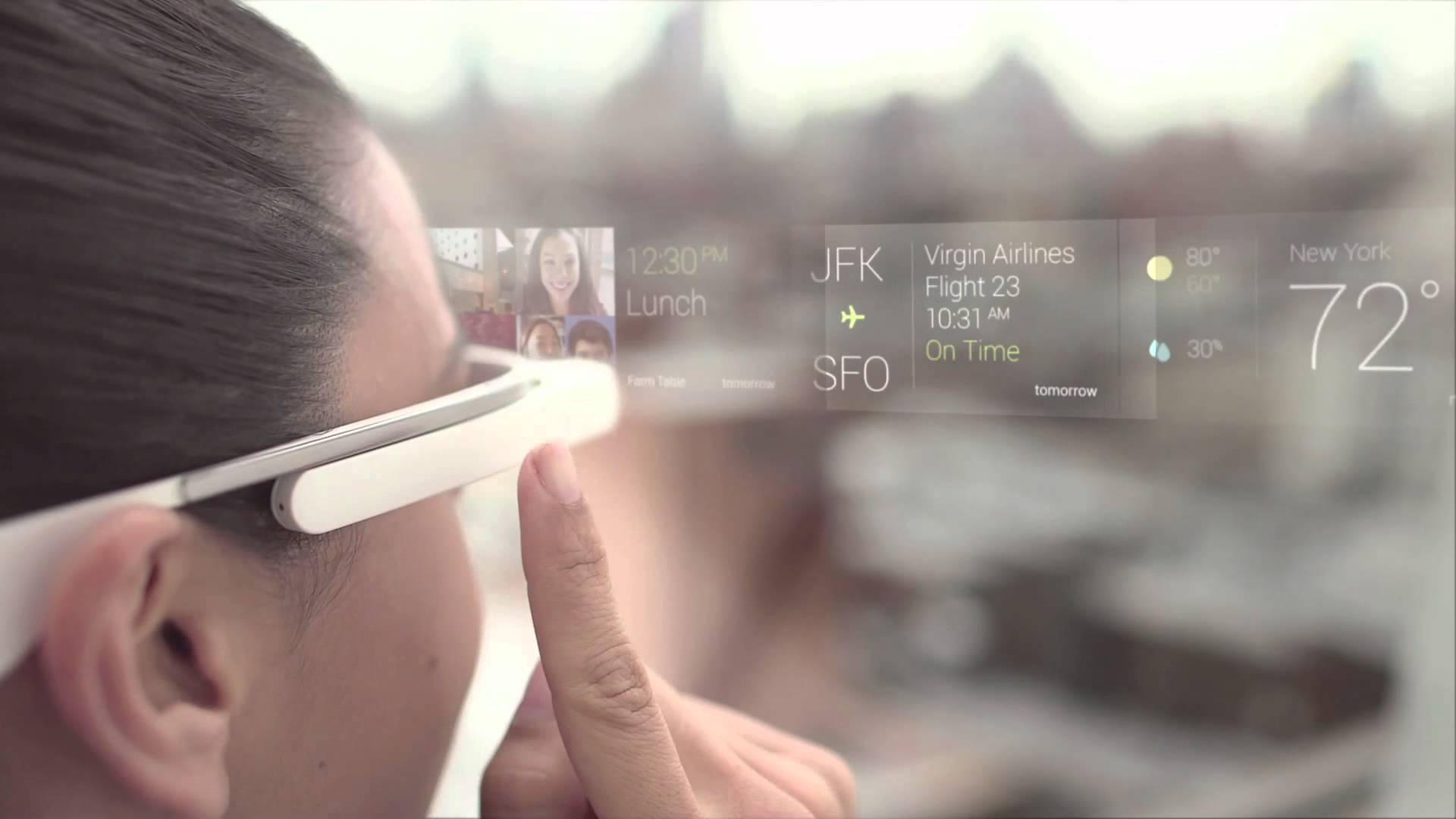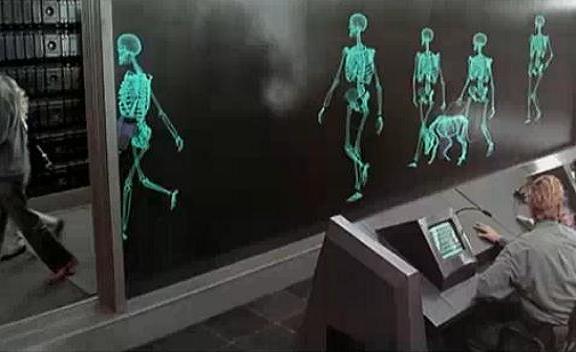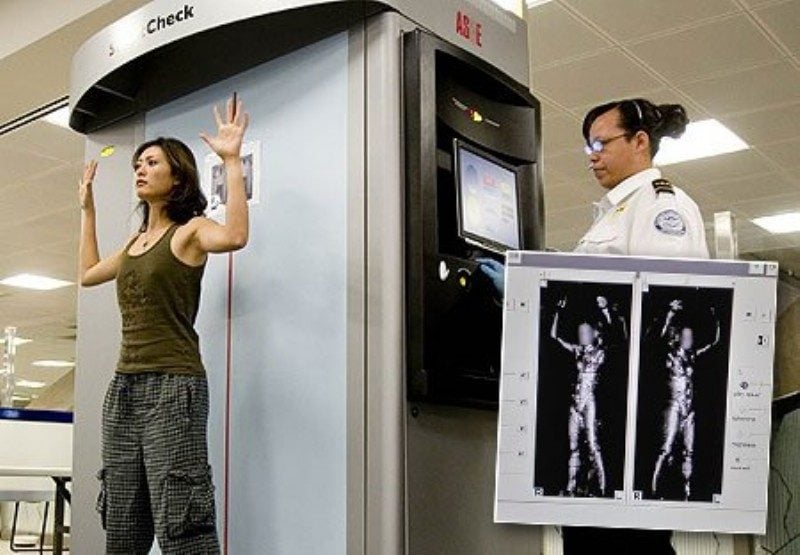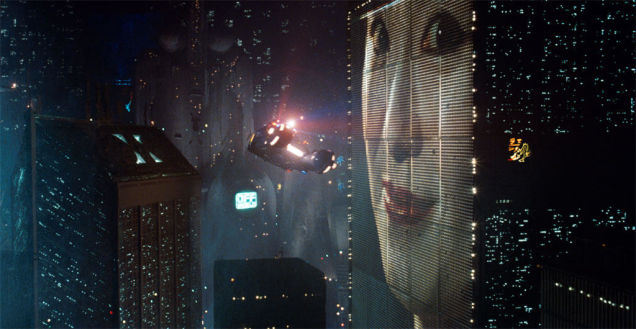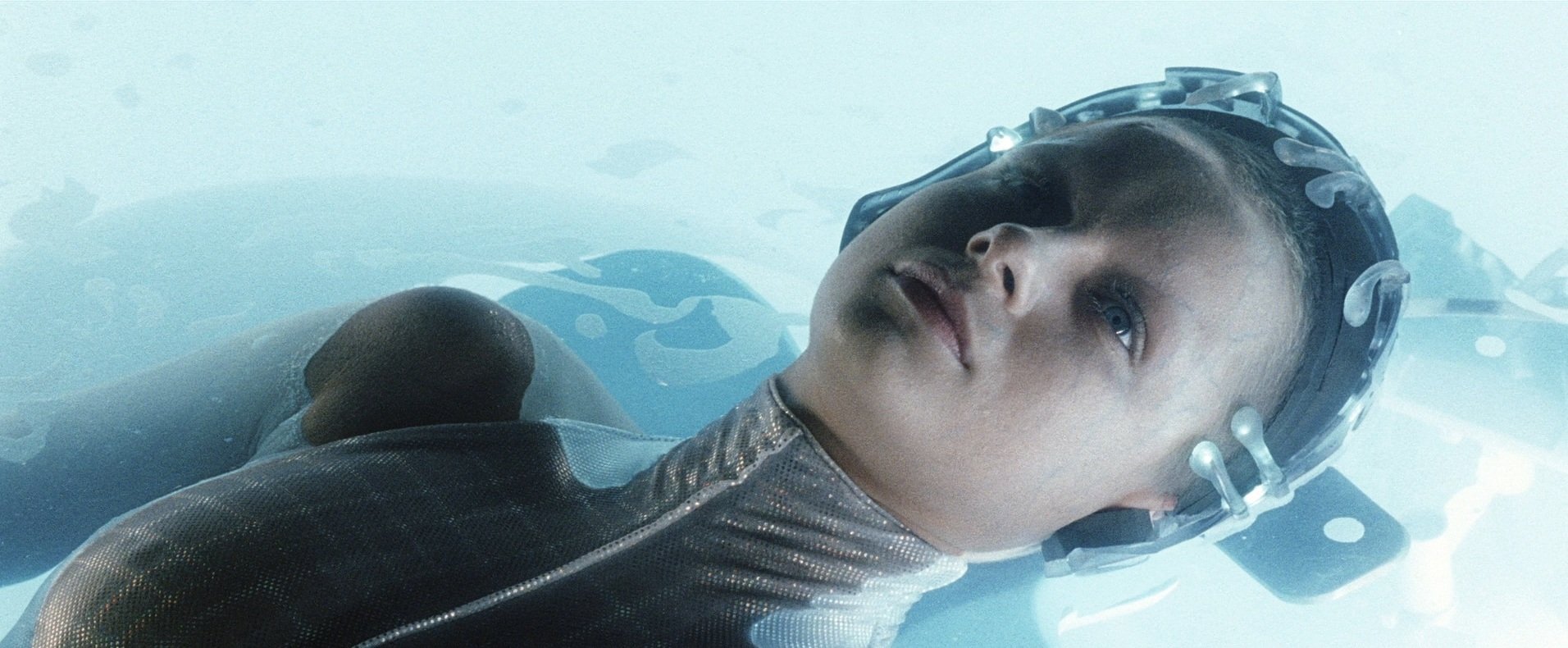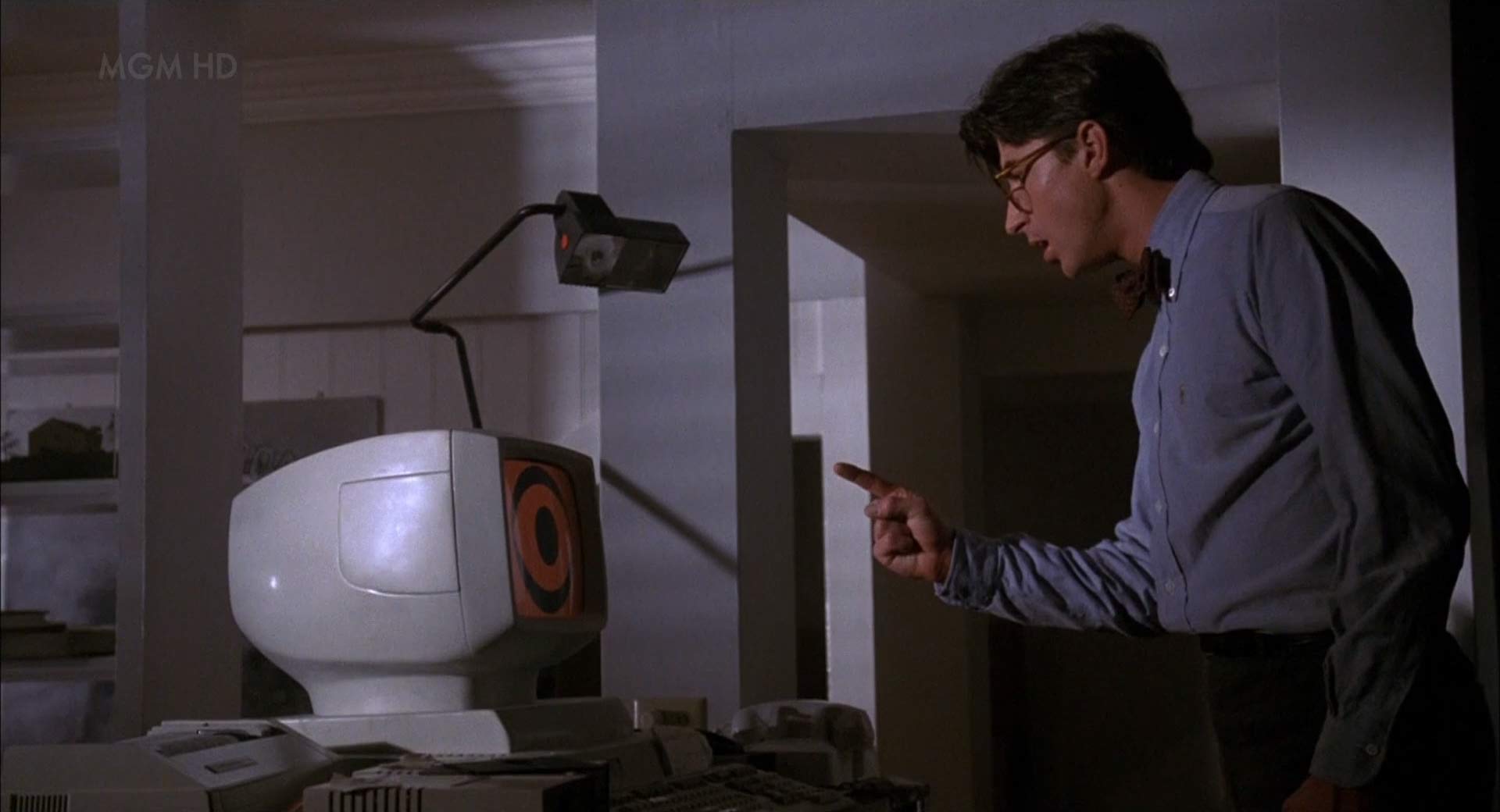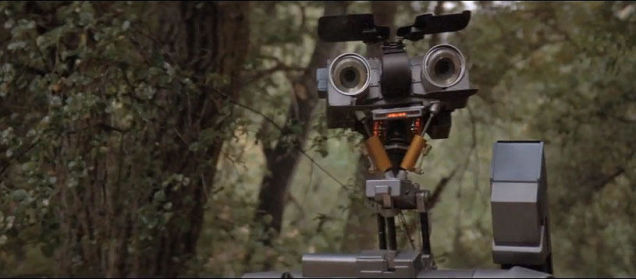Movies have been at the forefront of popular culture ever since the Lumière brothers screened their first film in 1895. It wasn’t a particularly exciting film by modern standards, it was simply entitled ‘Workers Leaving the Lumière Factory.’ It didn’t have any lead characters, flashy editing or dazzling special effects. It was black and white and lasted 50 seconds. But people loved it. People prophesized that it would change the world, and it did.
Since then, cinema has played an important role in documenting the world as it unfolds, predicting the way the world might end up, but most importantly, inspiring the way it can be and should be. Below there are 20 prophecies of modern tech in classic movies. Did the movies predict them or inspire those who made them? You decide.
1. Face/Off – Face Transplants
In Face/Off, good cop (John Travolta) agrees to go undercover by getting a face transplant of a notorious criminal king-pin. When Face/Off hit cinema screens in 1997 critics enjoyed the action but labeled it ‘silly’, ‘preposterous’ and ‘far-fetched.’ 13 years later, in Spain, the first full face transplant was carried out and it was a success. While we aren’t using the procedure to send agents undercover yet, the technology and medical advancements might one day make this ‘silly’ film a real prophecy of the future.
2. 2001: A Space Odyssey – iPads
Film director Stanley Kubrick worked closely with science fiction legend Arthur C. Clarke to make one of the greatest sci-fi films of all time: 2001: A Space Odyssey. In the film one of the astronauts has what appears to be an Apple iPad. Quite extraordinary considering the film was released in 1968. Yeah, thats 42 years before the iPad was released. Was Steve Jobs a fan of this film?
3. Minority Report – Personalised Advertising
Before Steven Spielberg embarked on adapting Philip K. Dick’s book Minority Report in 2002, he sat down with some of the best thinkers on the planet to depict a realistic future in the film. In one scene Tom Cruises’s character walks into a store and a holographic saleswoman tries to sell him something based on his current attire. This is personalised advertising, and as the movie predicted, its everywhere. Facebook users, for example, often get shown advertisements based on their ‘likes’ and profile information. How’d those assorted tank tops work out for you?
4. 2001: A Space Odyssey – Skype
In 2001: A Space Odyssey, the captain of the spacecraft talks to his daughter who’s situated back on earth. They talk through what looks like a webcam and a computer monitor… exactly like Skype. The strange thing is, the film was released 35 years before Skype was invented. Did the film predict the future or inspire it?
5. The Truman Show – Reality Television
Jim Carrey plays Truman Burbank in the Truman show. A boy who grows up in a constructed world unbeknownst that he’s the star of the biggest reality show on earth. When Truman starts to figure out he’s being watched by everyone he tries to break free. The film came before the current wave of reality TV and prophesized our obsession with spectating people living an seemingly ordinary lives. The only thing the film didn’t predict correctly was Truman’s desire to escape. Most people these days would probably want Truman’s life.
6. Jurassic Park – De-Extinction
In 1990 Michael Critchton published the novel Jurassic Park, which in 1993 Steven Spielberg turned into one of the highest grossing films of all time. In the story, dinosaur DNA is extracted from a mosquito preserved in amber to bring dinosaurs back from extinction. For many years the real science lagged behind the science fiction. De-extinction was a pipe dream. Then along came dolly in 1996: the first cloned mammal (sheep). Since then technology and our understanding of the genome has progressed to make the de-extinction found in Jurassic Park possible today. We can’t bring back the T-Rex because they died out 65 million years ago and we don’t have much left of them, but any animal that has become extinct in the last few tens of thousands of years can be. The big question is… should we?
7. Minority Report – Motion Sensor Gaming
In Minority Report (2002) we see Tom Cruise’s character manipulating video data via his hand motions alone. Fast forward 8 years and Microsoft released their Kinect. A webcam that allows you to play video games without the use of a controller. This type of motion sensor gaming, like technology in general, will only improve as time goes by. One day, the remote control will be a thing of the past.
8. Back to the Future II – Oculus Rift
When Back to The Future II came out in 1989, the lead character, Marty McFly, wore a strange virtual reality headset over breakfast. Unfortunately for viewers, the film was indeed set in the future so we couldn’t go out and buy one. But fast forward twenty-five years and the most promising virtual reality gaming system of all time is in full development. It’s called the Oculus Rift. Perhaps in another 25 years we’ll have hover boards.
9. 2001: A Space Odyssey – Siri
One of the earliest and most famous examples of artificial intelligence came in the form of HAL 9000, a spacecraft computer system that communicated with the astronauts in 2001: A Space Odyssey. Just like Apple’s Siri application, HAL 9000 has no face, just a calm calculated voice that sounds both friendly yet sinister at the same time. I hope Siri didn’t hear me say that.
10. Ironman – Exoskeleton Suit
Although the film Iron Man came out in the 2008 box office smash staring Robert Downey Jr, the character made his first comic book appearance way back in 1963. Tony Stark becomes Iron Man by using his billions of dollars and genius IQ to make an exoskeleton suit that can fly, shoot rockets and protect him from bad guys. But he’s not the only one. At DARPA, they’ve used their billions of dollars and genius inventors to do something similar.
This is an image of a soldier lifting up incredibly heavy missile with ease thanks to his state of the art electrically powered exoskeleton. Sure it’s a bit clunky, but so was Tony Stark’s first attempt. I think it would look better in red.
11. X-Men: Super Soldiers
The X-Men have some pretty crazy superpowers ranging from being able to control the weather to being able to manipulate metals. While these powers are still a pipe dream (for some of us), researchers at DARPA are developing ways of making ordinary humans a bit more super. For example, research is showing that by genetic manipulation we will one day have soldiers that can run at olympic speeds, function optimally without sleep and even regrow lost limbs! They’ll have to contact Stan Lee when it comes to naming them.
12. The Matrix: Gamified Learning
The characters in The Matrix are able to learn new complex skills such as kung fu and flying helicopters in a matter of minutes. They do this by entering virtual training simulation program that allows them to go through all of the trial and error of regular learning but without the real world consequences.
Jump through time to the present and you’ll find the gamification business is booming. Duolingo, voted Apple’s app of the year 2013, turns language learning into a point scoring game along with a host of other gamification programs such as Code Academy and Kahn Academy. With this gamified way of learning and Oculus Rift in the works, give it a few more years and we’ll all be entering The Matrix to learn kung fu… and spanish.
13. Planet of The Apes: Primate Communication
When Planet of The Apes came out in 1968 it made a satirical prophecy of the future based on our current political paradigms. That being said, no one actually thought that one day the earth would be ruled by apes. They aren’t that smart… are they?
Well it turns out chimpanzees have an much better short term memory span compared to humans. Chimps can remember the sequential order of 19+ numbers flashed on a screen compared to the 4-7 us humans can. Not only that but there has been lots of research done on teaching apes sign language, most notably seen in the critically acclaimed documentary Project Nim. In the film, two researchers embark on teaching a chimpanzee sign language from birth. The results were startling. Communication wasn’t always smooth, but a lot smoother than you might think. Apes, however, don’t have voice boxes, so the talking apes won’t be happening any time soon. But never say never project caesar might be in the works.
14. Terminator II – Google Glass
At the beginning of Terminator 2, The Terminator walks into a bar looking for clothes to wear. We get a glimpse at his computerised view of the world. He is able to scan people in the bar and find someone with same size clothes as him. Now, 23 years later and, Google are developing Google Glass, or as I like to think of it ‘Terminator vision.’ With a pair of Google’s glasses you’ll be see directions overlaid on actual roads and possibly bring up people’s Facebook profiles just by looking at their faces. It’s pretty incredible.
15. Total Recall – Airport X-rays
Total Recall is set in the future, where Mars is habitable. In one scene, the star, Arnold Schwarzenegger, walks through an airport in disguise as a woman. In this tense moment we see a real-time x-ray device which the passengers pass through. For years airports have had mandatory metal detectors but never full body x-rays… until now. The prophecy of Total Recall has come true. Since 2012 full-body backscatter x-ray devices have become mandatory in US airports.
16. Blade Runner – Digital Billboards
Blade Runner, like Minority Report and Total Recall, was adapted from a novel by Philip K. Dick. The guy was a serious prophet of the future. Blade Runner is set in a future where robots (called replicants) walk the earth in disguise of human beings. In one scene of the city scape we see a digital billboard. The film was released in 1982, years before the first actual digital billboard was created. Now they’re so commonplace in places like Time Square that we take them for granted.
17. Gattaca – Home DNA Testing
While human beings are a lot more similar than we are different, there are individual variances among us. Some of us have mild allergies, unusual vitamin deficiencies and react slightly differently to different types of diets and exercise regimes. In the film, Gattaca, the social class system is built upon the quality and thoroughbred of an individual’s DNA. During the film Ethan Hawke’s character, who has a less than ideal DNA, swaps his with Jude Law’s to avoid being labelled an invalid. Thankfully, this is not the direction the world is headed in, but home DNA testing is. Home DNA paternity tests went on sale in 2011, a full 14 years after being seen in Gattaca.
18. Minority Report – Predicting Crimes
The precogs in Minority Report are genetic mutants able to predict the future with the power of their minds. We don’t have those yet but since this post is about modern tech in classic movies, we have the technological equivalent; computer software that can predict the likelihood of a crime occurring before it even happens. The biggest predictor of future behaviour is past behaviour and that’s what this software uses to figure of the statistical likelihood of a potential crime. The video game Watchdogs features a similar premise. Before long people will start getting arrested even before they do anything… maybe.
19. Electric Dreams – Virtual Relationships
In Electric Dreams, which came out in 1984, the main character gets into a strange relationship with his computer. This was comedic at the time but now with hindsight, the film prophesizes a strange reality that to some extent has come true. People, for the most part aren’t falling in love with their computers, but are using technology based relationships as a substitute for face to face communication. This isn’t necessarily a bad thing, but can be when the person you’re talking to isn’t who you think they are, as the documentary and TV show Catfish illustrates.
20. Short Circuit – Military Robots
Short Circuit came is a military robot that suddenly becomes intelligent and escapes. The military robot industry is currently a multi billion dollar a year enterprise. Whether it be drones or land vehicles that can think for themselves, so to speak. Short Circuit is an incredible example of modern tech in classic movies. We don’t have military robots that act human because there isn’t really a need for such a thing.
If military robots replace foot soldiers, wars one day might be fought purely with technology, like a billion dollar chess game played out in real life. Now that would be cool. On second thoughts, lets keep that prophecy for the movies.
Featured photo credit: Modern tech in classic movies, iPad from 2001 a space odyssey via 9to5mac.files.wordpress.com

